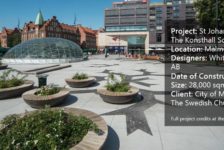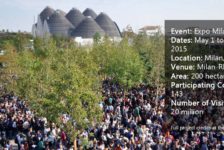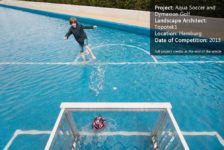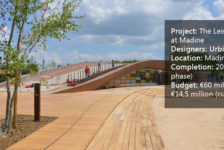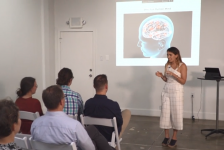There is so much happening in the industry lately, new products, new companies and new concepts seemingly everyone is a living wall professional as the frenzy of designers continue to push the limits of bigger and more elaborate projects. It’s hard to believe my first product is over 10 years old.
Over the years I have highlighted or exposed a majority of the living wall applications and there is hardly a system I don’t know, I’m humbled by our own success but more importantly I have earned the right to call it like I see it. I personally document projects all over the world in order to study and comment accordingly. Lighting is one of the single biggest mistakes made by installers of living walls.
There is a wide range of living wall products and varying degrees of quality available from plastic, felt, fabrics, recycled bottles, pockets, panels, multi part systems, pots, bags and some plastic boxes no more advanced than a simple window box. In addition to products and materials quality you have to choose between the various technologies of hydroponic, growing media and a combination of both. I suggest reading some of the archives via www.greenroofs.com.
So…..how do you pick what system or product is right for your project? Frankly I don’t have enough room or time to write another book (not yet) but I can tell you there are common variables to living wall success that will provide more insight on the products and materials available. First start with your expectation for product longevity. Plastic is a limited application due to expansion and contraction, exterior use failure is inevitable. Felts and fabrics can start to break down in as little as 6 weeks, they are also a breeding ground for algae build up. Choose your product wisely especially if the project is of magnitude and accessible to the public, I have literally seen various systems falling off the wall. Beyond product materials there are common variables to vertical garden success, there is a science to creating a natural environment in the vertical plane.
Personally I have designed our Green Living Wall with Mother Nature in mind. In a natural setting roots grow in crevices of rock faces, the plant is irrigated from the top down with naturally occurring nutrients and bacteria composted from leaf litter found at the top of the wall. All plants require Water, Nutrition, Light and Media (Some type of holding power for the root system) as the four critical and non-optional components for plants to thrive. There is a difference between a plant surviving and thriving. The difference is the lighting! Lighting is the gateway to how water and nutrients interact with the biological processes that will allow plants to thrive….or in fact die.
Plants, bacteria and algae are organisms that can harvest light and convert CO2 into organic material. The process of photosynthesis is familiar to anyone who works with plants, involving converting light into energy that is used to fuel biological activity. No light no photosynthesis no energy no plant! The process is actually much more complex and the process varies in different organisms. There are three common ingredients to the photosynthetic recipe: CO2 (Carbon Dioxide), H2O (Water) and Light Energy. The process reduces CO2 to a carbohydrate (Sugar) and removes the electrons from H20, which results in the release of O2 (Oxygen). In principle the plant needs the CO2 (Harmful to humans), they produce a byproduct which is O2, the perfect relationship between humans and plants.
Unlike bacteria and algae, living walls with plants are processing light reactions splitting water molecules which creates energy in the form of O2 and Glucose. Chlorophyll absorbs light and gets excited releasing adaptors to form an electron chain. Hydrogen is pumped across chloroplasts which now work like a battery. (Told you it wasn’t that easy) This is a simplified yet important description of the process because all light can not stimulate photosynthesis.
There is a correlating factor between lighting and water. Light is the driver of photosynthesis which involves the splitting of water to create energy. Not just any light will do, lighting for green walls requires both quality and quantity. Plants with chlorophyll thrive best in light waves in the blue and red spectrum.
 Low light levels mean low levels of photosynthesis. This lack of light is a trigger for a chain reaction through the plant causing evapotranspiration which impacts the inability for nutrient uptake by the plant. The plants metabolic function slows down, it is unable to engage in the photosynthesis process. When the plant function slows down the requirements for water and nutrients also diminished. This is a critical stage in which most overwater their plants and causing root rot, pathogens and fungus gnats are present. The plant looks unhealthy, leggy and thinner. Lack of light puts the plant under stress allowing pathogens and other disease to attack. For photosynthesis to occur there has to be light and carbon dioxide, plants thrive on CO2 combined with the proper lighting.
Low light levels mean low levels of photosynthesis. This lack of light is a trigger for a chain reaction through the plant causing evapotranspiration which impacts the inability for nutrient uptake by the plant. The plants metabolic function slows down, it is unable to engage in the photosynthesis process. When the plant function slows down the requirements for water and nutrients also diminished. This is a critical stage in which most overwater their plants and causing root rot, pathogens and fungus gnats are present. The plant looks unhealthy, leggy and thinner. Lack of light puts the plant under stress allowing pathogens and other disease to attack. For photosynthesis to occur there has to be light and carbon dioxide, plants thrive on CO2 combined with the proper lighting.
Intensity
The intensity of light is easily described in Foot Candles (FC) or Lumens. One foot candle equals the light emitted by one candle at a distance of one foot. The terminology is used to calculate lighting levels. Because light intensity is integral to photosynthesis ideal intensity is discussed in FC. Fig.1 shows how the light closer to the source (A) as it starts to decrease with distance (B). The intensity of the bulb is determined by the how bright the source of the light is and how much light is hitting the plants from what distance.
Color Temperature
Color temperature is a unit of measure to express the color of light emitted by a lamp ranging from red to blue. This scale is not to be confused with intensity. You can have a 100 w and a 250 w bulb with the same color temperature however the 250w will put out more intense light increasing the foot candles.
The color of the light will determine the plants ability to produce strong stems, leaves and its ability to flower. For vegetable growers flowering is important since flowers equal produce. The blues encourage good leaf and stem growth while reds and oranges promote flowering. The natural sunlight provides a full spectrum of color while the interior market must rely on supplemental lighting designed according to the types of plants in the living wall. Our vertical farms require a combination of blue and red also referred to a full spectrum while a typical indoor living wall will thrive on 4500 K to 6000K on the color spectrum.
Purchase a light meter. There is no way to visually estimate the amount of light directly at each location of the living wall. With a light meter you can take readings along the living wall from top to bottom and left to right in all locations. The light will dramatically decrease as you get farther down the wall or farther away from your light source.
The Illumination chart above depicts precise areas of the living wall. The numbers represent foot candles (FC) for low light tropical plants. Concerned areas are referenced in the chart below. It is important to provide a lighting solution that will rectify these areas because the plants in these areas are unable to gather enough light for the photosynthetic process.
| Area | Foot Candles |
|---|---|
| Low Light | 250 – 1500 |
| Medium Light | 1500 – 2500 |
| High Light | 2500 – 3500 |
(For reference, a summer day with no clouds is 15,000 FC.)
At 100 FC most plants struggle to survive. There is no growth and the plant is trying to live. I require a minimum of 250 foot candles to classify plants as low light. We have success with a limited plant pallet at 150 foot candles however the more foot candles the wider range of plants and less maintenance.
Supplemental lighting
Supplemental lighting considerations are decided on the needs of the plants only after a meter reading and assessing the location and the available natural light. The first obvious choice is natural lighting. A shopping center with glass ceilings is ideal. However if supplemental lighting is required the plants will dictate not only the type of light but also the preferred side of the Red or Blue light spectrum. Non flowering plants will prefer a blue light also known as “cool light” encouraging leafy bushy growth. Red light triggers a response to create blooms and flowers however the reds and oranges typically produce substantial heat.
The photo above is the towering 40 foot Living wall flanked by a special glass with an orange tint that reflects the harmful UV rays from the sun yet allows the full color spectrum to penetrate the living wall canopy maximizing photosynthesis. The lighting for this project is 100% natural and is ideal for the health and success of the living wall. Without natural lighting the trick is to mimic the sun through artificial lighting.
Lighting Options
The lighting choices are becoming more advanced with the use of Light Emitting Diodes (LEDs). Cost is of concern since a single light that covers a 4’x4’ area can exceed $2500.00 USD. Compared to High Pressure Sodium (HPS) which are 1/8th the cost. The tradeoff is in the longevity and cost of operating the light, LEDs will last up to 50,000 hours and create little to no heat. You either pay up front for the LEDs or you pay in the long run with heat buildup and the cost of operation. In most interior applications the lighting needs can be met with 250w halogens and a 4500K light spectrum. Picture to the right displays a whiter light designed with the plants in mind.
 Lighting is the single most important element to the success of your living wall. Inadequate lighting results in a plant that won’t need water, if the plant won’t drink it can’t absorb nutrients. This is when most over water our plants creating an anaerobic environment. Over watering is common in felt like hydroponic living walls coupled with poor lighting plants never have a chance to thrive. The variables to a successful living wall need to come together as Mother Nature intended. All variables have to balance in order for a living wall to thrive. Poor product design that promotes anaerobic media and poor drainage are typical. Being able to dial in the variables for each specific location and project is a skill learned over years of practice, trial and error. Lighting is only one variable to the success of a thriving vertical garden.
Lighting is the single most important element to the success of your living wall. Inadequate lighting results in a plant that won’t need water, if the plant won’t drink it can’t absorb nutrients. This is when most over water our plants creating an anaerobic environment. Over watering is common in felt like hydroponic living walls coupled with poor lighting plants never have a chance to thrive. The variables to a successful living wall need to come together as Mother Nature intended. All variables have to balance in order for a living wall to thrive. Poor product design that promotes anaerobic media and poor drainage are typical. Being able to dial in the variables for each specific location and project is a skill learned over years of practice, trial and error. Lighting is only one variable to the success of a thriving vertical garden.






